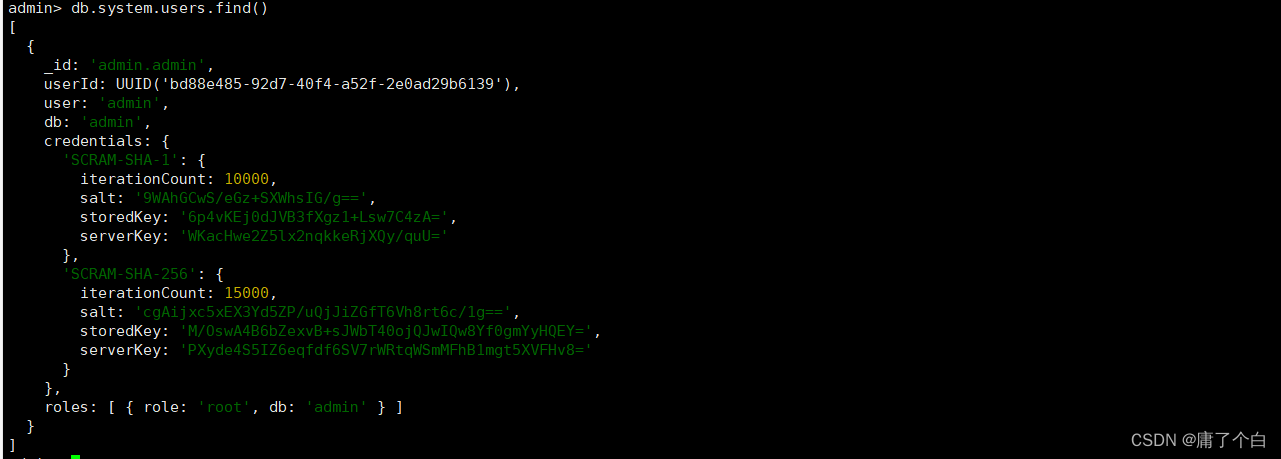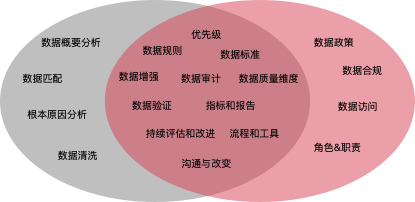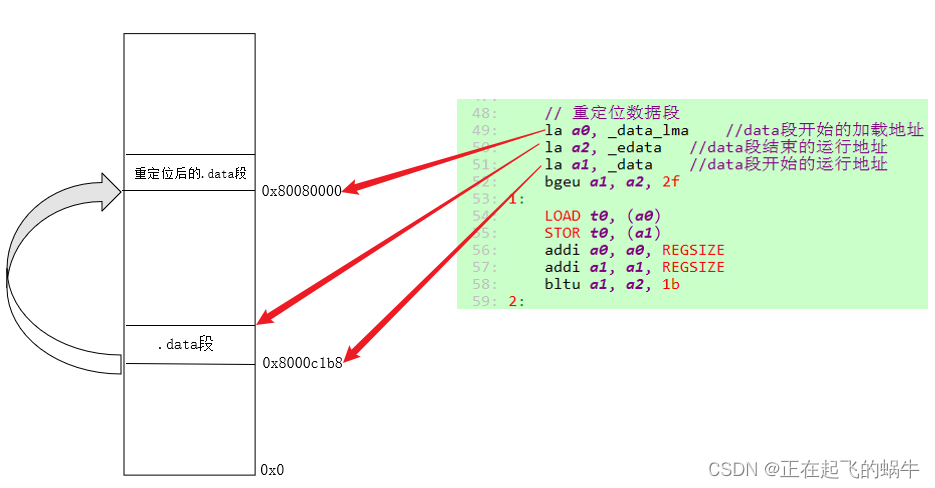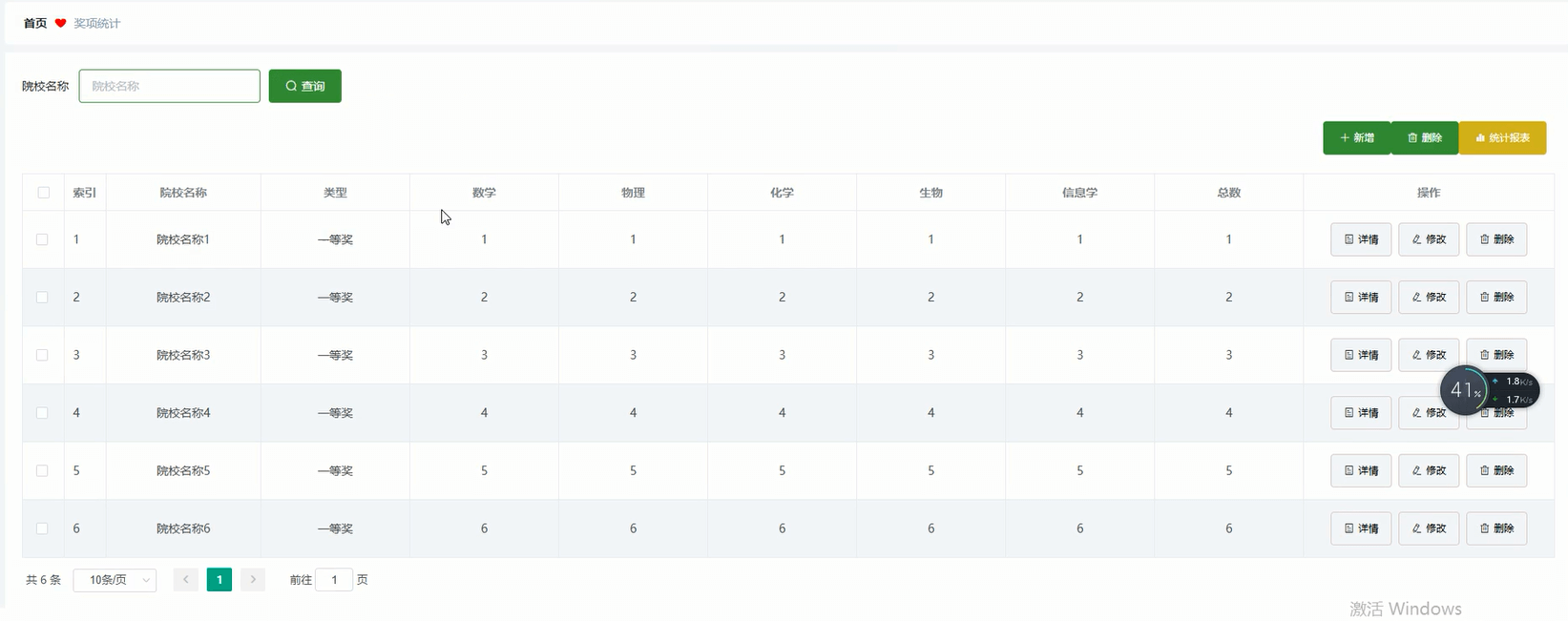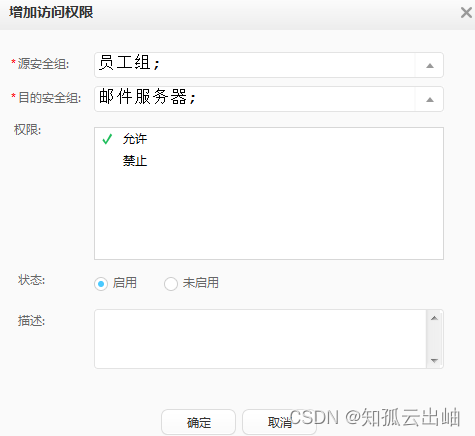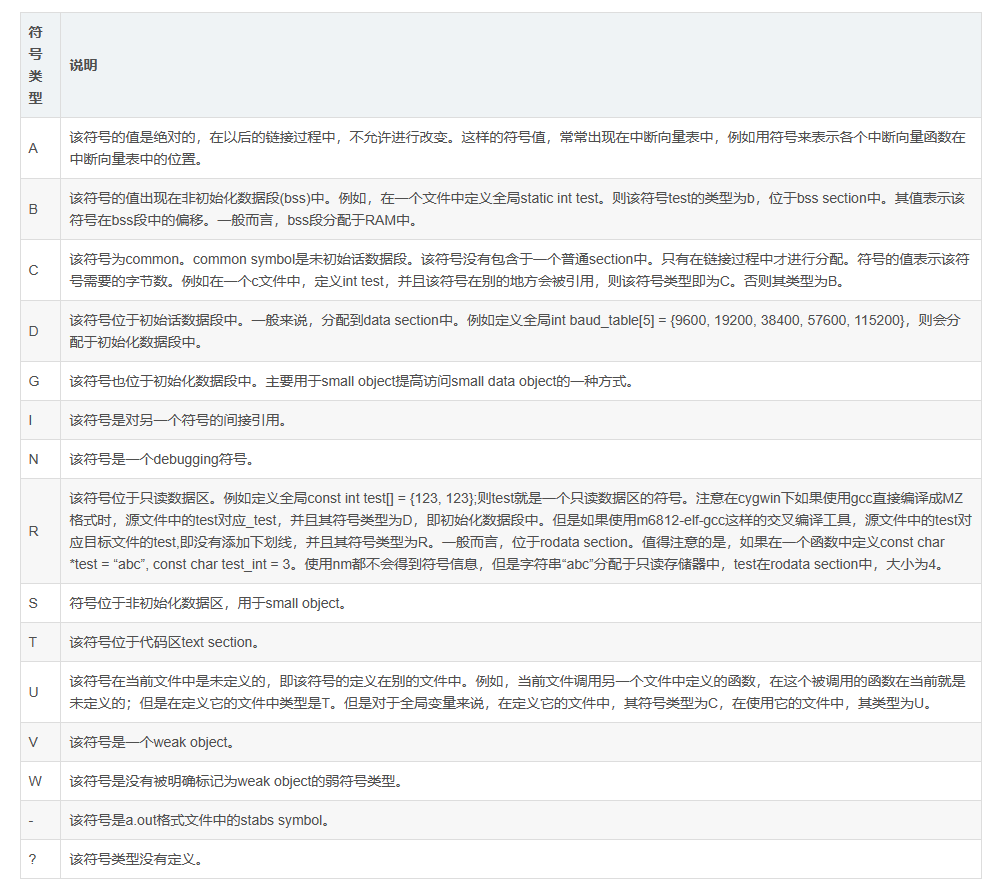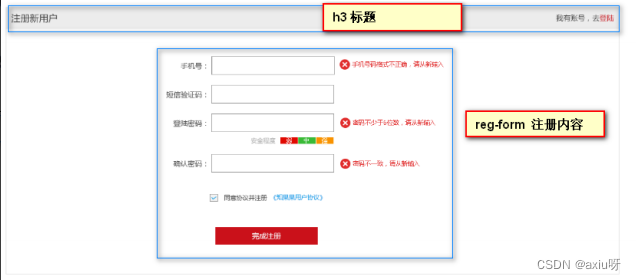93. 复原 IP 地址
中等
有效 IP 地址 正好由四个整数(每个整数位于 0 到 255 之间组成,且不能含有前导 0),整数之间用 ‘.’ 分隔。
例如:“0.1.2.201” 和 “192.168.1.1” 是 有效 IP 地址,但是 “0.011.255.245”、“192.168.1.312” 和 “192.168@1.1” 是 无效 IP 地址。
给定一个只包含数字的字符串 s ,用以表示一个 IP 地址,返回所有可能的有效 IP 地址,这些地址可以通过在 s 中插入 ‘.’ 来形成。你 不能 重新排序或删除 s 中的任何数字。你可以按 任何 顺序返回答案。
class Solution {
List<String> res = new LinkedList<>();
LinkedList<String> path = new LinkedList<>();
public List<String> restoreIpAddresses(String s) {
backtrack(s, 0);
return res;
}
public void backtrack(String s, int start) {
if(path.size() == 4 && start == s.length()) {
res.add(String.join(".", path));
}
for (int i = start; i < s.length(); i++) {
if (!isValid(s, start, i)) { // 判断这段数字合不合法
continue;
}
if(path.size() >= 4) break; // 已经分解成 4 部分了,不能再分解了
// 如果合法,加入路径
path.add(s.substring(start, i + 1));
// 继续向右切
backtrack(s, i + 1);
// 撤销加入
path.remove(path.size() - 1);
}
}
// 判断字符串s在左闭右闭区间[start, end]所组成的数字是否合法
boolean isValid(String s, int start, int end) {
if (start > end) return false;
// 0开头的数字不合法, 除非是 ‘0’
if (s.charAt(start) == '0' && start != end) return false;
int num = 0;
for (int i = start; i <= end; i++) {
// 遇到⾮数字字符不合法(好像不用判断)
if (s.charAt(i) > '9' || s.charAt(i) < '0') {
return false;
}
num = num * 10 + (s.charAt(i) - '0');
if (num > 255) return false; // 如果⼤于255了不合法
}
return true;
}
}
78. 子集
中等
给你一个整数数组 nums ,数组中的元素 互不相同 。返回该数组所有可能的子集(幂集)。
解集 不能 包含重复的子集。你可以按 任意顺序 返回解集。
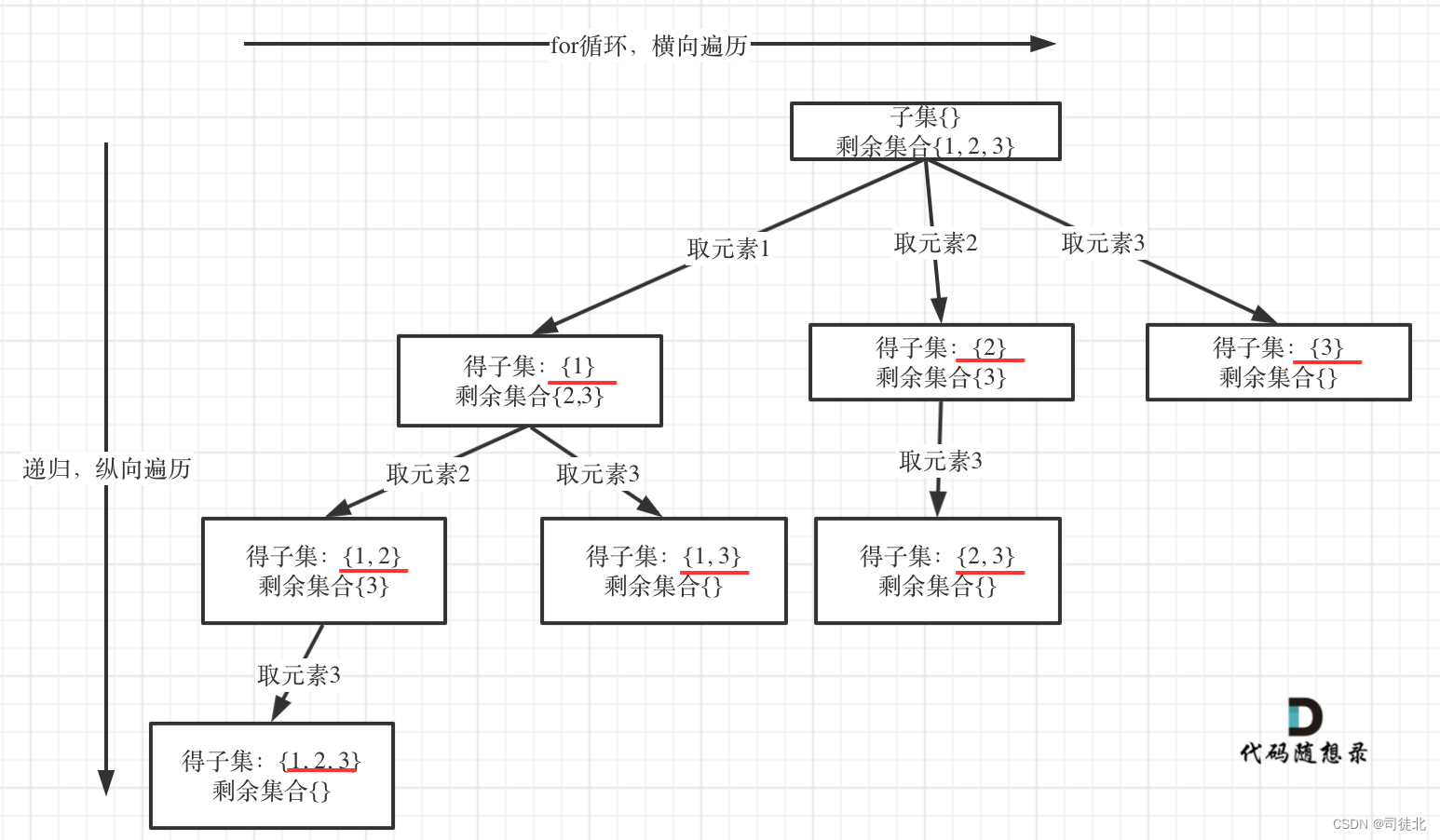
class Solution {
List<List<Integer>> res = new ArrayList<>();
List<Integer> path = new ArrayList<>();
public List<List<Integer>> subsets(int[] nums) {
backtrack(nums, 0);
return res;
}
public void backtrack(int[] nums, int start) {
res.add(new ArrayList<>(path));
if (path.size() == nums.length) return; //可以不写
for (int i = start; i < nums.length; i++) {
path.add(nums[i]);
backtrack(nums, i + 1); //backtrack(nums, start + 1);总是写成这个!!!
path.remove(path.size() - 1);
}
return;
}
}
90. 子集 II
中等
给你一个整数数组 nums ,其中可能包含重复元素,请你返回该数组所有可能的子集(幂集)。
解集 不能 包含重复的子集。返回的解集中,子集可以按 任意顺序 排列。

class Solution {
List<List<Integer>> res = new ArrayList<>();
List<Integer> path = new ArrayList<>();
public List<List<Integer>> subsetsWithDup(int[] nums) {
Arrays.sort(nums);
backtrack(nums, 0);
return res;
}
public void backtrack(int nums[], int start) {
res.add(new ArrayList<>(path));
for (int i = start; i < nums.length; i++) {
// i != start这个可大有讲究,以【1,2,2】为例,
// 它保证了可以收集到【1,2,2】【2,2】等结果
// 不能写成 i != 0,这样会漏掉很多
// 剪枝减的主要是在每次准备在剩余集合里挑元素时,已经挑过一遍的情况
if (i != start && nums[i] == nums[i - 1]) {
continue;
}
path.add(nums[i]);
backtrack(nums, i + 1);
path.remove(path.size() - 1);
}
}
}


